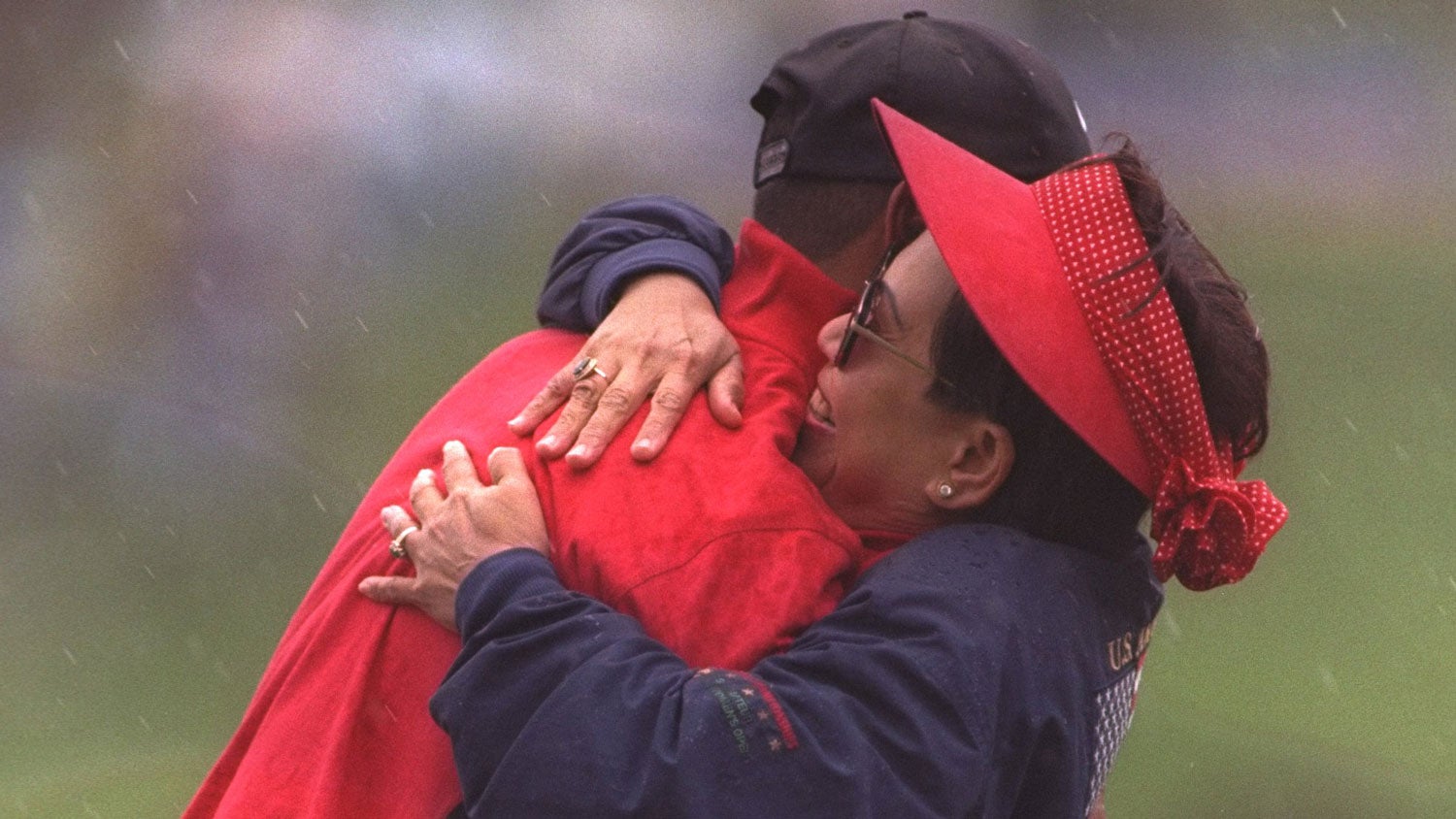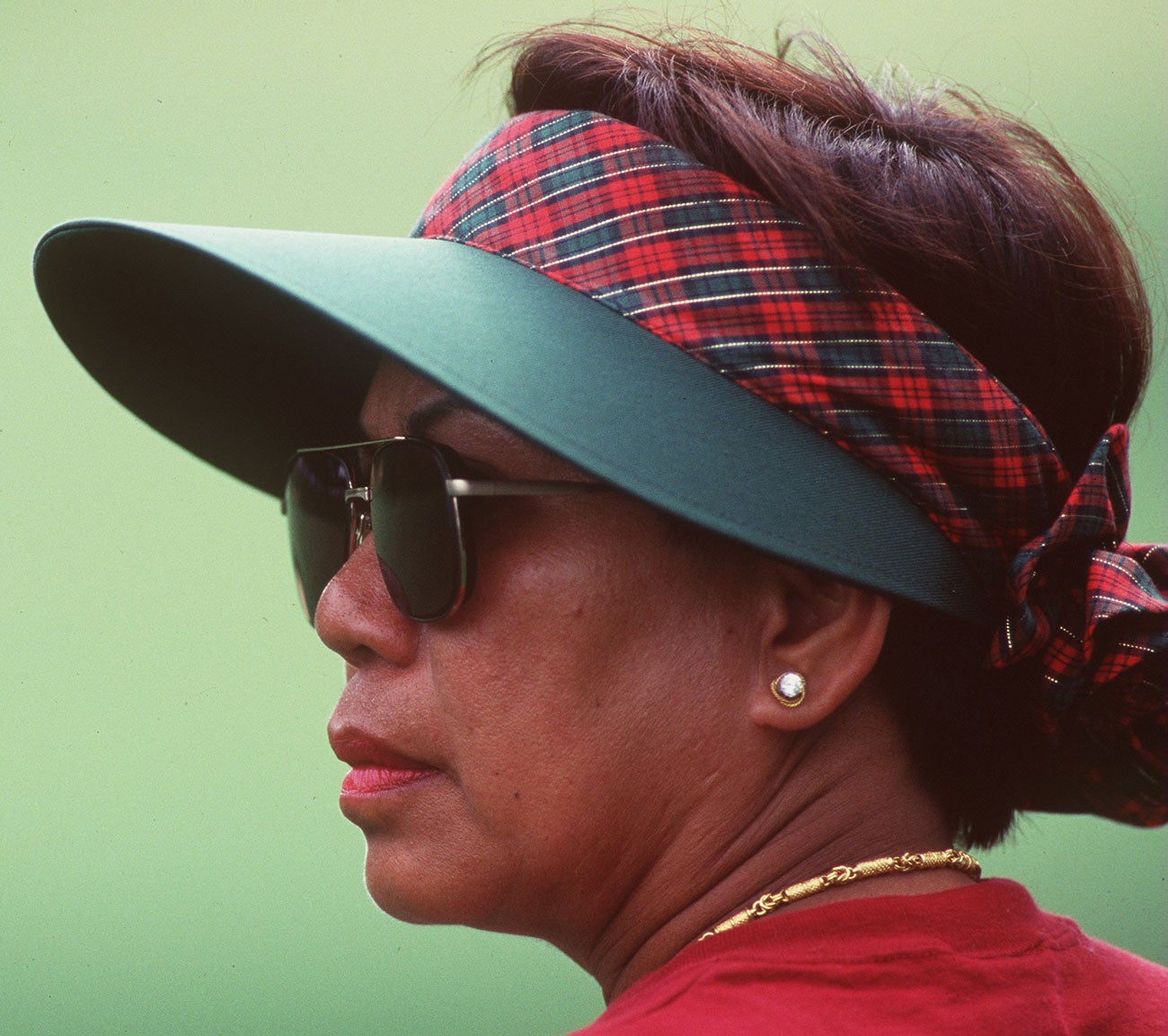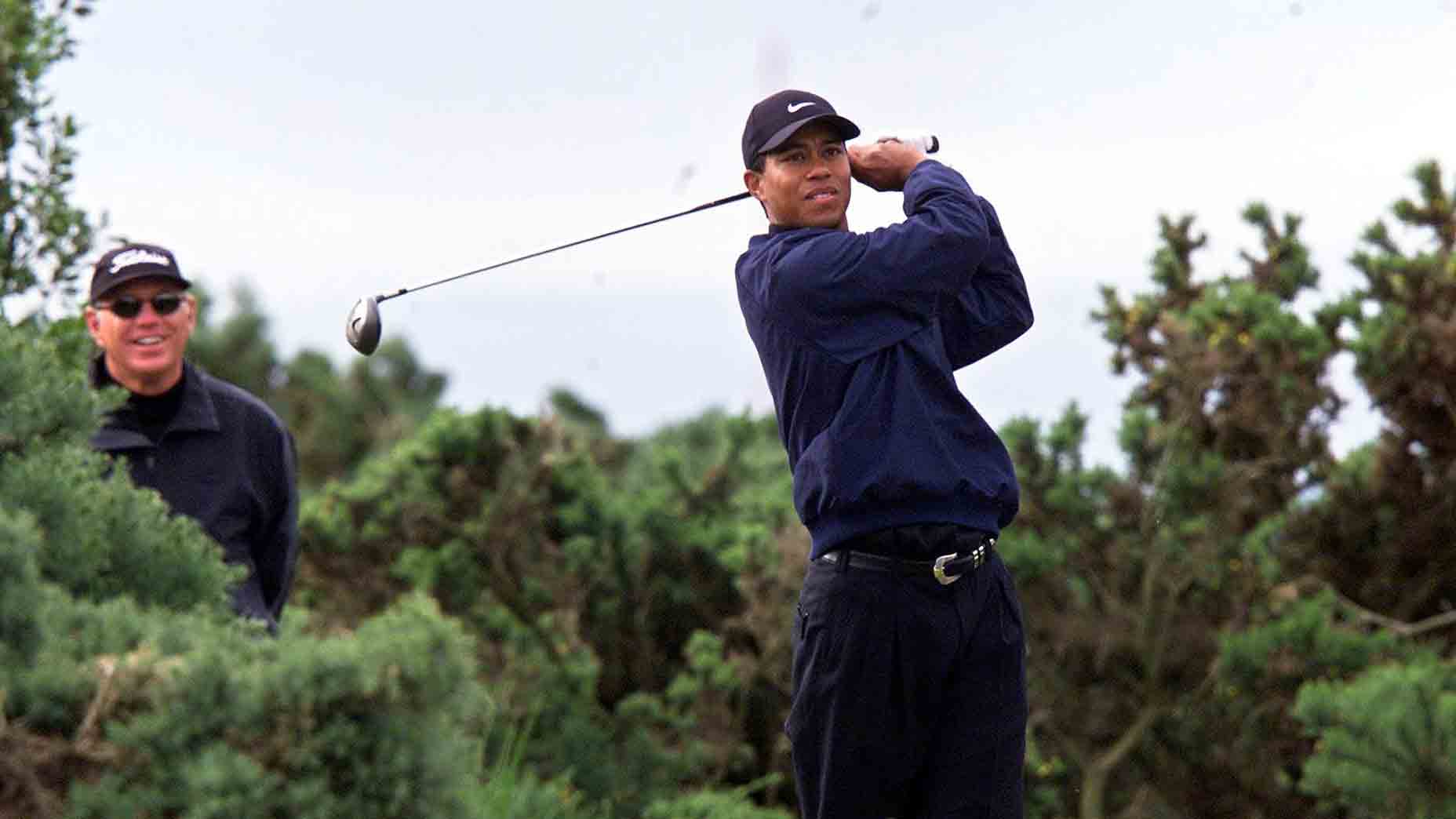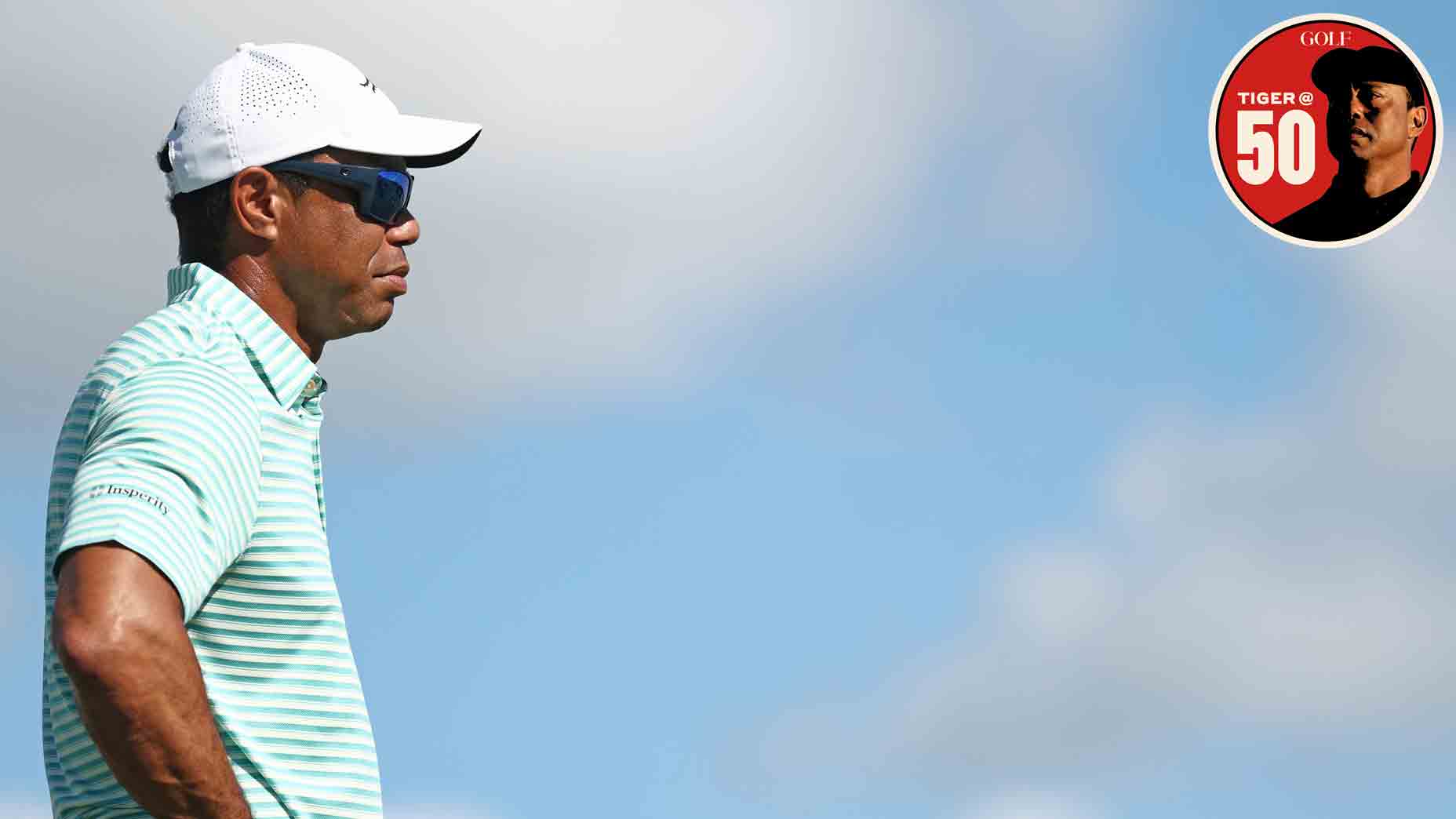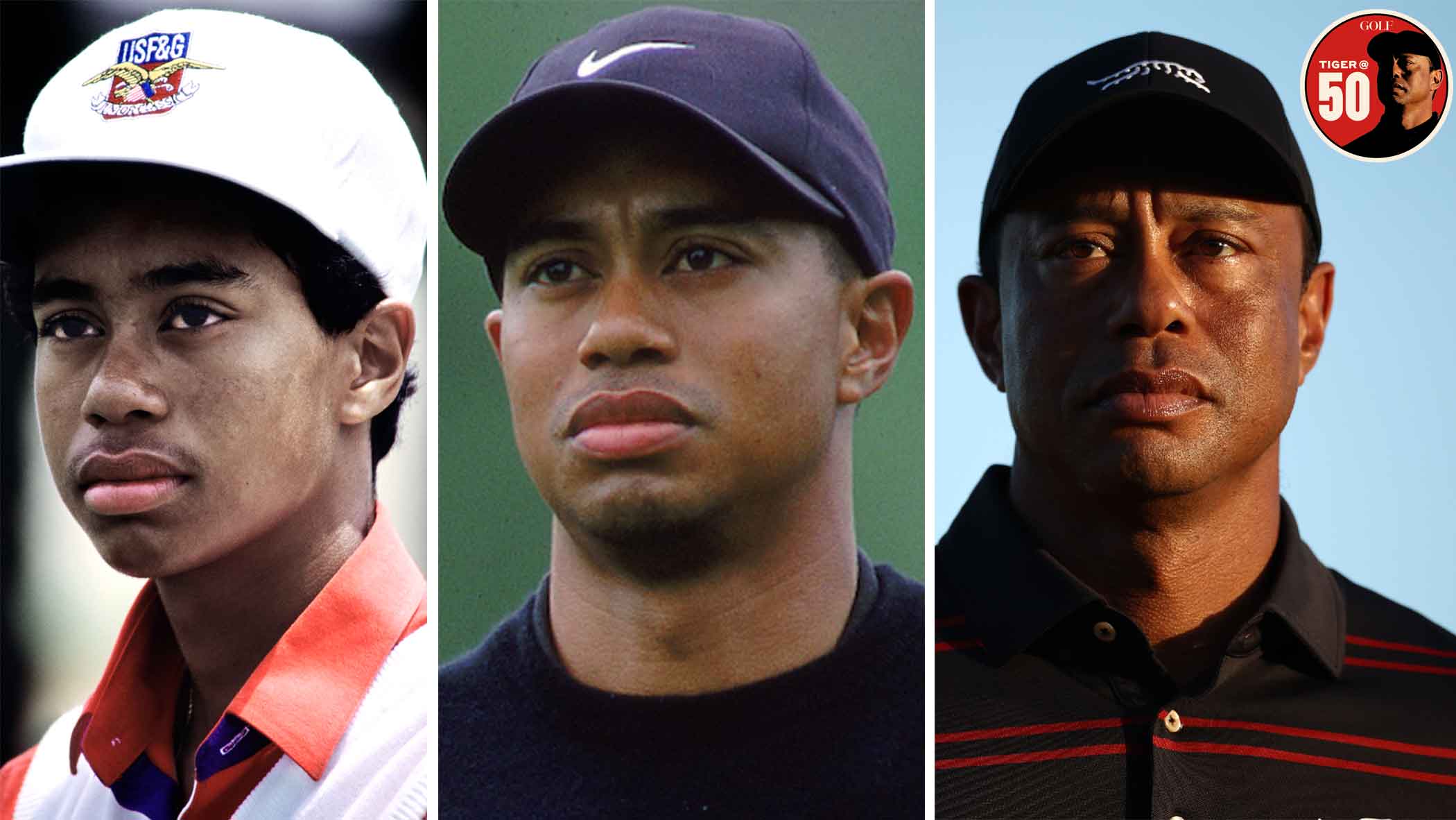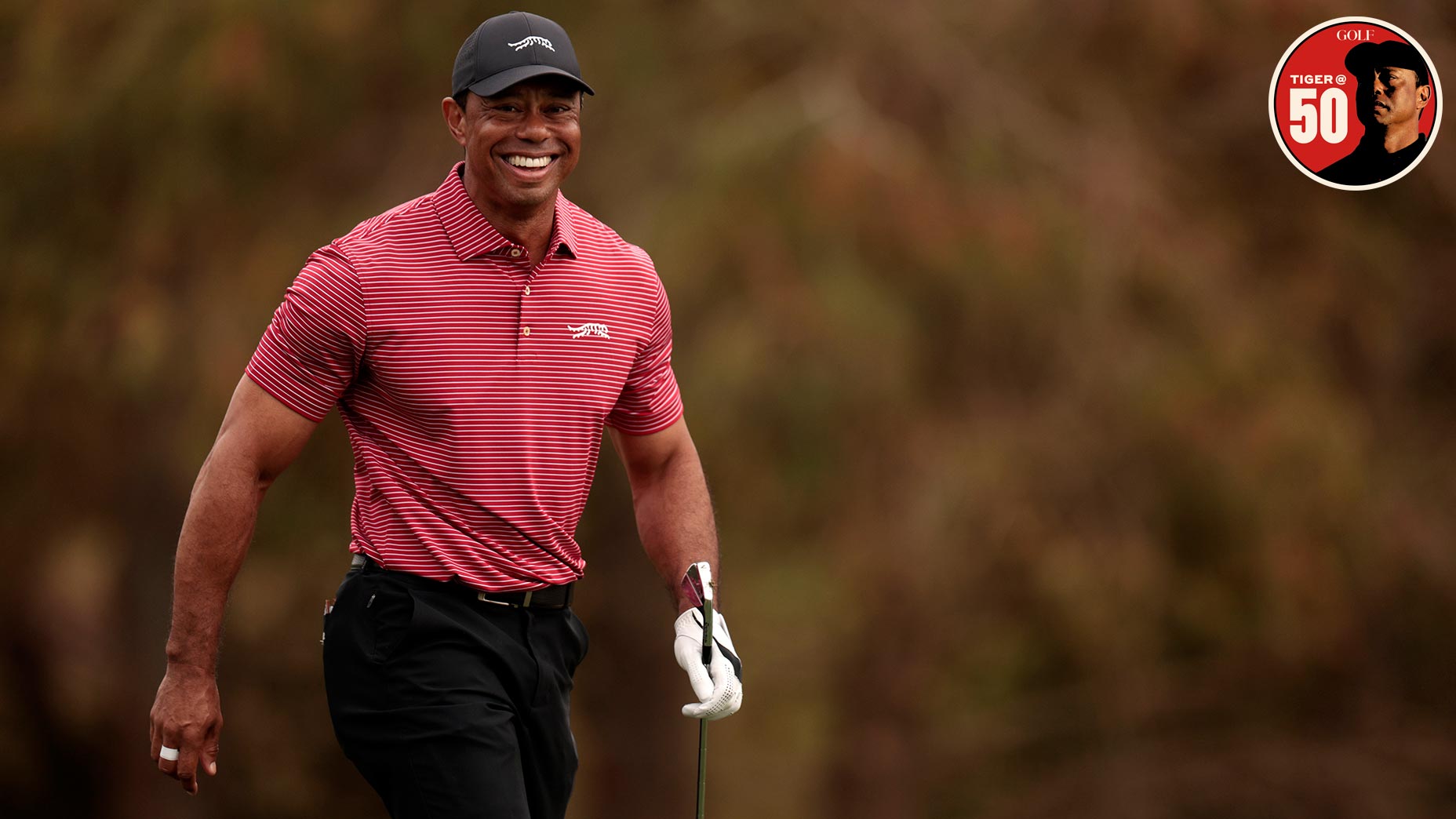Happy Mother’s Day! This week, we’re highlighting the experiences of some of the most high-profile women in the game, each of whom share a meaningful title: Mom. Next up: Tida Woods, mother of Tiger.
ICYMI: Mother’s Day gift guide: 35 fabulous gifts for golf-loving moms
ICYMI: Annika Sorenstam Q&A on motherhood, sharing the spotlight
ICYMI: Why Amy Olson’s final round was her most memorable
ICYMI: How motherhood actually extended Michelle Wie West’s career
ICYMI: What’s it like to be a working mom on the LPGA Tour? Spend a day with Brittany Lincicome
***
When the Tiger Woods origin story has been told over the years — in newspaper stories in the early days, later in magazine pieces, eventually in books and documentaries — Earl Woods, Tiger’s father, was always front and center. Earl had a vision. (“Tiger will do more than any other man in history to change the course of humanity,” Earl told Sports Illustrated.) Earl was Tiger’s putting whisperer, and the only reason Butch oversaw Tiger’s swing was because Earl got the two of them together. Earl, Earl, Earl. Big-hug Earl.
In the better press tents, we knew better. Of course it takes two to tango. It wasn’t as if Earl found Tiger as an infant floating down Rae’s Creek in a Gore-Tex baby basket. When it comes to Tiger mothers, Tiger’s mother is the GOAT. Here, on the eve of Mother’s Day, she really should need no introduction, but it’s been a while: presenting Ms. Kultida Punsawad Woods, a native of Thailand who speaks English with a distinct accent, some dropped words and with perfect precision. Consider these telling sentences as Tida talked about Earl to a Golf Digest writer: “Old man is soft. He cry. He forgive people. Not me. I don’t forgive anybody.”
In Tida, we see Tiger.
Was Tiger ever soft? No. Not physically, not mentally. Did Tiger ever forgive anybody? See: Norman, Greg; Chamblee, Brandel; Haney, Hank.
You want to be an on-the-field assassin? You need 10 tons of Tida, and Tiger had it. Over the past 25 years or so, I can remember only one instance when Woods showed something like empathy for one of his opponents. That was in 2005, at a Tour event at Harding Park in San Francisco, when John Daly missed a three-footer on the second hole of a playoff to lose to Woods. For a little while there, Tiger seemed to feel Daly’s pain.
To beat other players in the stretch run, again and again and again, it takes talent, of course — and the killer gene. Enter Tida. When Tiger won his first Tour event, in 1996, in a playoff over Davis Love, Tida said of her only child, “He take his heart.” Tiger once told Steve DiMeglio of USA Today, “My mom’s still here and I’m still deathly afraid of her.”
In Tom Callahan’s book about Earl Woods, “In Search of Tiger,” he cites this exchange from a long-ago clinic Tiger gave:
Earl: “Let me introduce a young whippersnapper who’s never been spanked.”
Tiger: “He’s right. He never had to spank me growing up as a kid. Because Mom beat the hell out of my ass. I’ve still got the handprints.”
Maybe there was some hyperbolic humor in that. Probably. Some, anyway.
Recently, when Woods granted rare interviews to promote his new clothing line, he talked about his mother’s influence, both with Carson Daly, on Today, the long-running NBC morning show, and with Jimmy Fallon, the current host of The Tonight Show, NBC’s long-running night cap. (When Arnold Palmer helped get Golf Channel off the ground, he said he envisioned it as something similar to The Tonight Show, on which he was a frequent guest — something relaxing, pleasant, inoffensive, an easy way to head off into dreamland. Arnold always was an NBC guy. Woods, in his own way, is, too.)
He explained to Daly and Fallon that he started wearing red shirts for important matches as a kid at the urging of his mother. “The red story is actually a good one,” Woods told Fallon. “It comes from my mom. My mom thought, being a Capricorn, whatever, red is my power color, some b.s. like that.”
There’s likely more cultural mixing in those sentences than we could ever know. Tida Woods is a practicing Buddhist and, in Buddhism, red is notably a power color. In Thailand, wearing red on Sundays imbues its wearer with extra powers. For a suburban kid with an immigrant mother playing golf in junior golf events in Southern California in the 1980s, “some b.s. like that” sounds like a convenient shorthand to make a cultural difference from mom at home seem broadly relatable to the outside world. But it had to be a real thing to Tida, and her son did win 82 Tour events wearing red.
When Tiger won his first Tour event, in a playoff over Davis Love, Tida said of her only child, “He take his heart.”
Red must actually be his power color, and Tiger must have some faith in that which defies scientific logic. He told both Fallon and Daly of junior tournaments where, “to spite” his mother, he wore blue. He did not win those tournaments, he said. Sun Day Red is the name of his new clothing line. Thanks, mom. “Mom is always right,” Woods told Fallon. Telling the same origin-of-red story to Carson Daly, Woods said, “It’s mom. My mommy.” Mommy knows best.
When Tiger won the 1997 Masters, his first major as a pro, by 12 shots, his mother was right there, on the green, standing behind Earl, from whom she was already estranged. All the photos showed Earl and Tiger in a bear hug, but mother and son came a moment later.
On July 7, 2005, there was a series of terrorist bombings in London. More than 50 people were killed. Tida was in London at the time. A week later, during the first round of the British Open, at the Old Course, play was halted for two minutes of silent meditation. Woods was clearly lost in thought, and he was asked about it after his round. Here, lightly edited, is what Woods said during a press conference that day.
“I was more thankful than anything else because my mom was in the building right across the street from where one of the bombs blew up. I was very thankful that my mom is still here. It very easily could have been pretty tragic for me personally. I can only imagine what everyone else who was involved, where they lost a loved one or had loved ones hurt, what they might have been going through.
“She was vacationing in London. I don’t know why — maybe because the weather is so great. She just had a bunch of friends and family there. She was kind of touring Europe before she came over here. I’ve talked to her about it, but she really hasn’t said a whole lot. Typical Mom. I asked, ‘Are you OK?’
“’Yeah, good. What are you going to do today on the course?’That kind of thing. She likes to change the subject real fast. That’s kind of how our family is. If you’re injured or you’re hurt or you’re sick or anything, you don’t tell anyone. You just deal with life and move on.”
Tiger won that Open. Mother was there.
When Tiger offered his wrenching and public ballroom apology in 2010, for his serial infidelity, his mother was right there then, too, sitting in the first row. When Woods was done speaking, Tida told Doug Ferguson of the AP, “Some of media, especially tabloid, hurt my son bad. He didn’t do anything illegal. He didn’t kill anybody. But he try to improve himself.”
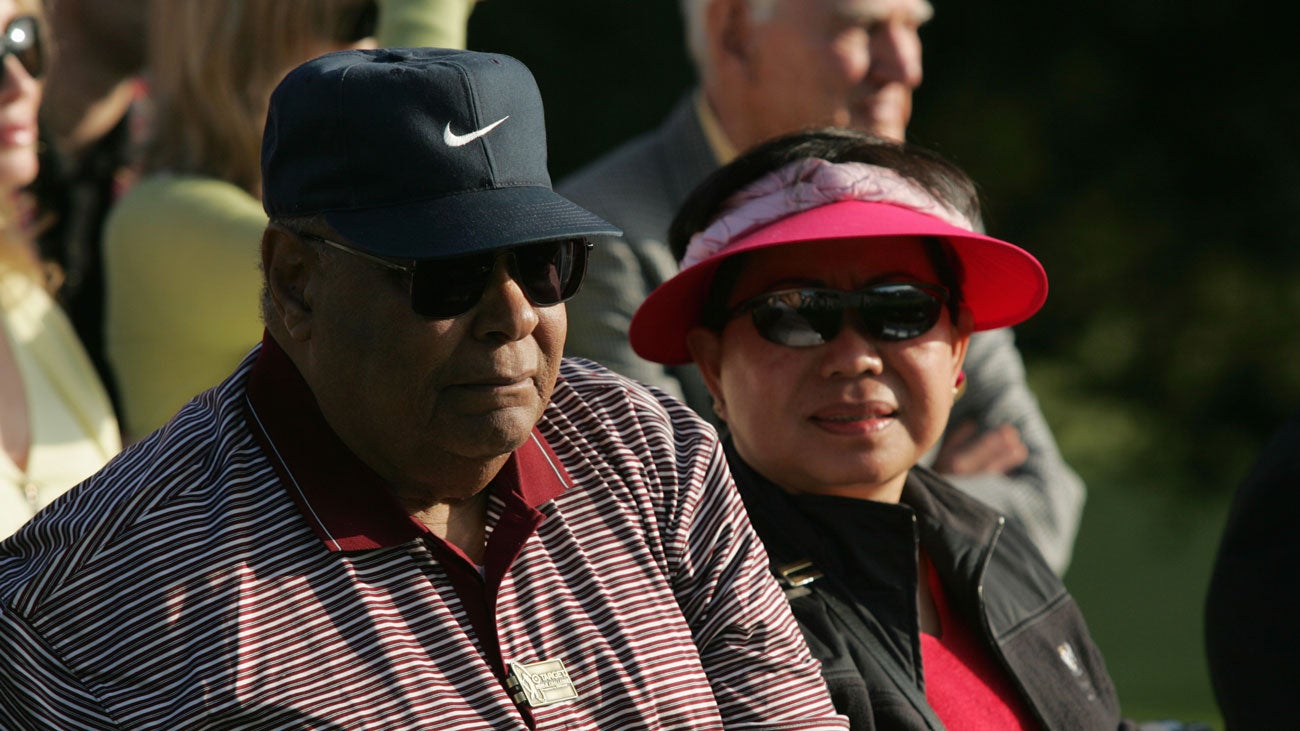
This next bit was written a few years ago but maybe holds up:
Tiger, unusually, made two trips to Butler Cabin after winning the 2019 Masters. In the second one, he was interviewed by Jim Nantz and Nick Faldo, and he talked about his mother, about her 5:30 morning wake-up call to get Tiger to his peewee golf tournaments. Ninety minutes in the Plymouth Duster there, a nine-hole tournament, then back.
It would have been easy in those years to look at Tiger and see him making those swings and collecting those trophies and say he was just doing what came naturally, but there was more going on than that. Tiger’s play helped keep Tida and Earl together, or semi-together. Tiger was playing for more than laminate trophies.
That’s a lot to carry, and to unpack.
In the 1980s, when Tiger was coming up, there weren’t many kids of Asian descent playing junior golf in Southern California, and black kids were rarer yet. Combo-platter parents like Tida and Earl were pretty much nonexistent. Tida didn’t care. As Tiger rose through the ranks, first as an amateur, later as a professional, Tida was in the first row. Not a hole ahead, like many of the other parents, but right near the action. She wasn’t marching those fairways looking to make friends. (When Phil Mickelson’s mother introduced herself to Tiger’s mother for the first time, it was at the 2012 Ryder Cup.)
Tida had a job to do, and glad-handing was not part of the description.
She was there to support and to push.
Tiger is half Tida, if not more.
In her early old age, as she stood beside Augusta National’s 18th green that Sunday afternoon, she looked like a million other proud immigrant grandmothers whose family had found prosperity in America. Golf was Tiger’s ticket, but had it not been golf, it would have been something else. Tida’s son, no matter what gifts were assigned to him at birth, was going to make it in something, because the son was going to work. Tida was going to make sure of that. No matter what marital struggles they had, Tida and Earl shared a work ethic. In raising Tiger, that was their starting point.
Tida Woods, graying and serious, was an arresting sight, standing above that 18th green at Augusta National, looking down at it from a little knoll. She, too, is an icon in the game, in her own way. There was nobody anything like her.
in the vicinity, a woman of a certain age, wealthy, independent, suspicious, surrounded by people — her grandchildren were right beside her — but unmistakably alone, too. In a manner of speaking, she was a widow long before Earl died in 2006.
When Tiger was young, he wondered why people called him Black but not Thai. It was a good question. In Thailand, the locals look at Tiger and see one of their own. To whatever degree Tiger practices Buddhism, that’s all Tida. None of this is to diminish Earl’s role, for good and for otherwise. But Tida deserves more credit for some of Tiger’s significant traits: his ruthlessness, his verbal economy, his love of dogs, his solitary nature, his waste-not impulse. When Tiger was a young pro, Tida collected the Nike shirts Tiger didn’t want and parceled them out to friends, in their wrappers, as the mood struck her. Tida’s old Plymouth Duster was surely long gone by the 2019 Masters, but it was a pleasure to hear Tiger remember it with such fondness and ease.
The image will be in a scrapbook that will live forever. Mom driving. Son riding shotgun. The clubs in the back. No words. No talk of manifestation or be-the-ball or do-your-best or lose-with-grace. It was ninety-eighty-something. The message went way beyond words, but these three probably convey the mood: Just do it.
You know why there will never be another Tiger? Because there will never be another Tida, as there will never be another Earl. No Earl, no Tida, no Tiger. This isn’t a Mother’s Day story or a Father’s Day story or a Sun Day Red story. This whole thing cannot be duplicated. But that won’t stop people from trying.
Michael Bamberger welcomes your comments at Michael.Bamberger@golf.com
